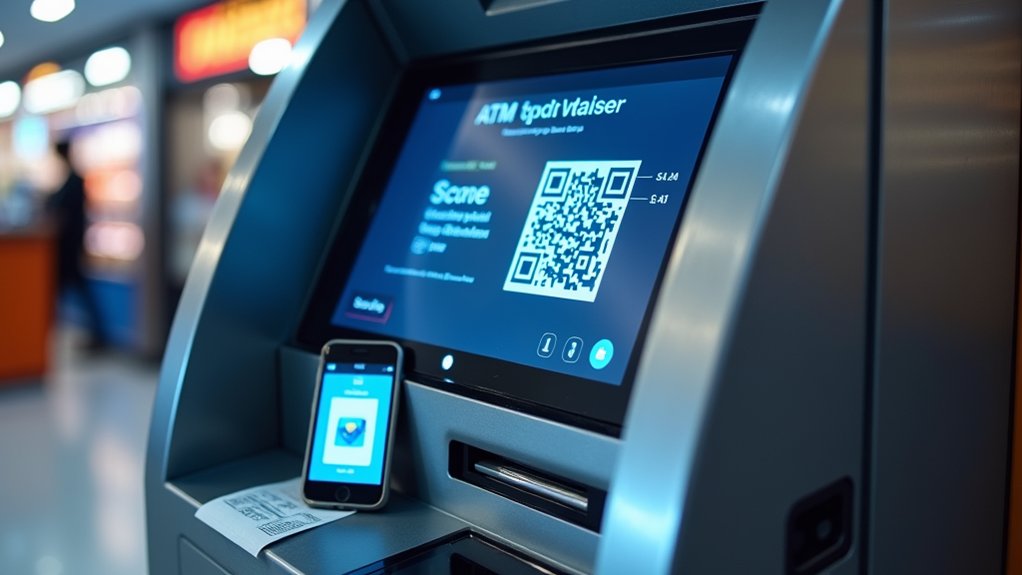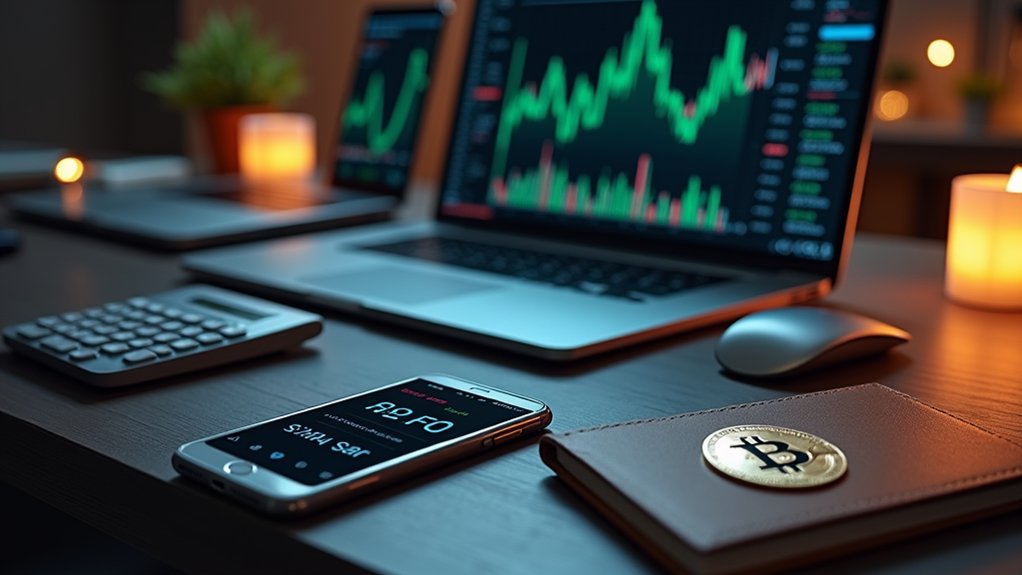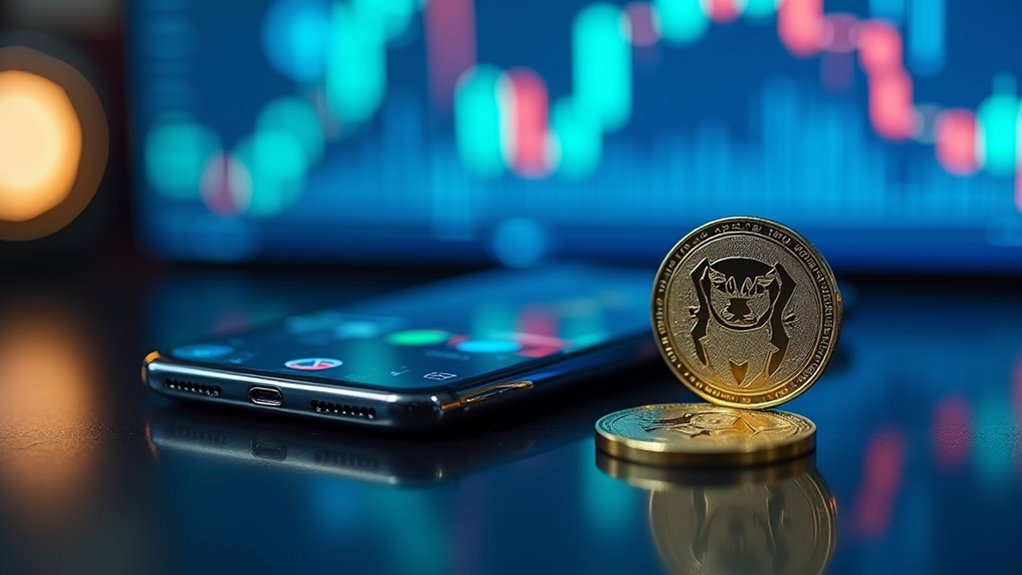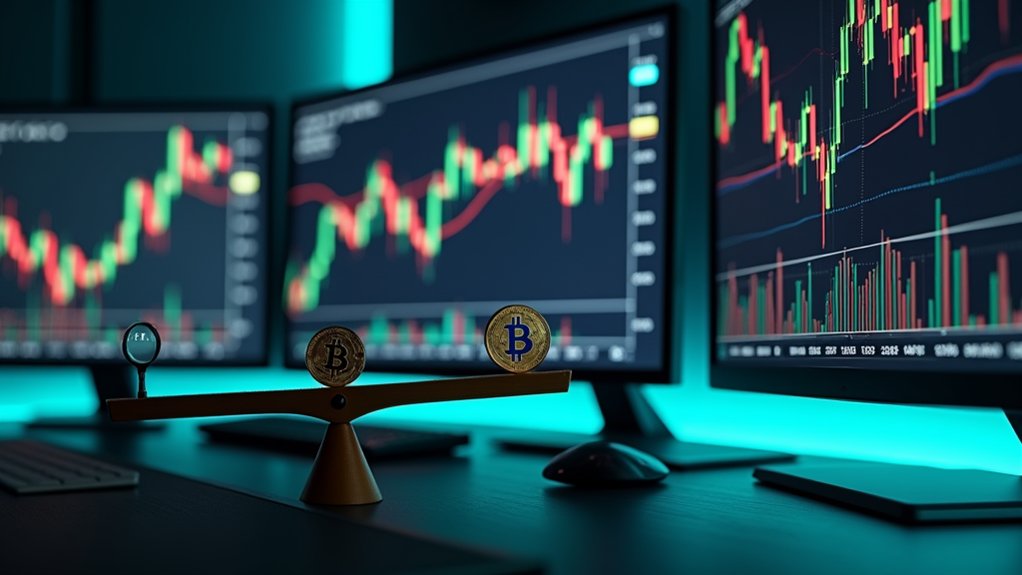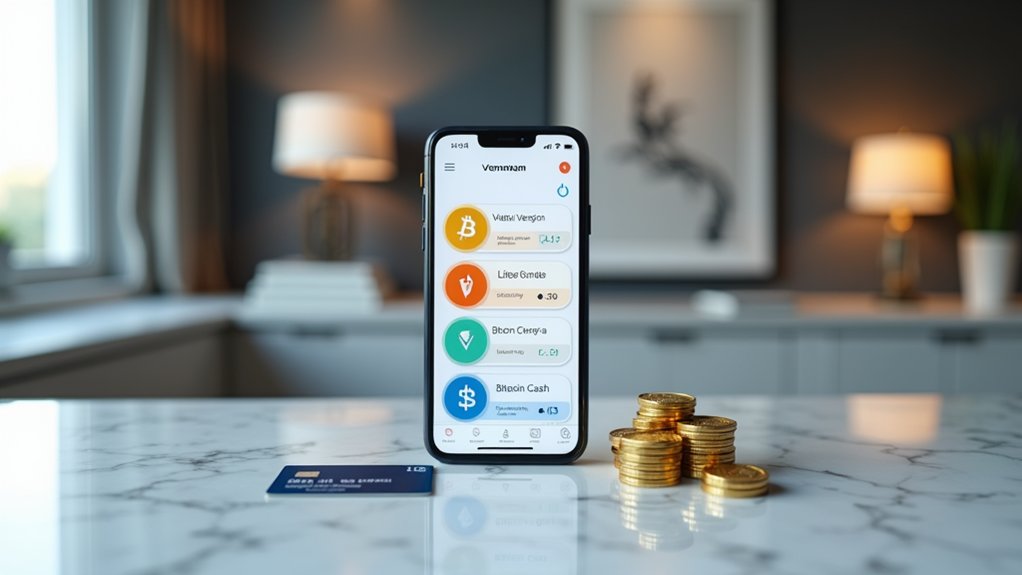Crypto ATMs provide access to digital assets without traditional exchanges. To utilize one, users must first establish a cryptocurrency wallet and locate a suitable machine using tools like Coin ATM Radar. After selecting the desired operation (buy or sell), customers complete identity verification procedures and process their transaction by depositing cash or scanning QR codes. Transaction fees typically range from 10-23%, substantially higher than conventional exchange platforms. Understanding these operational fundamentals establishes the foundation for successful cryptocurrency transactions.
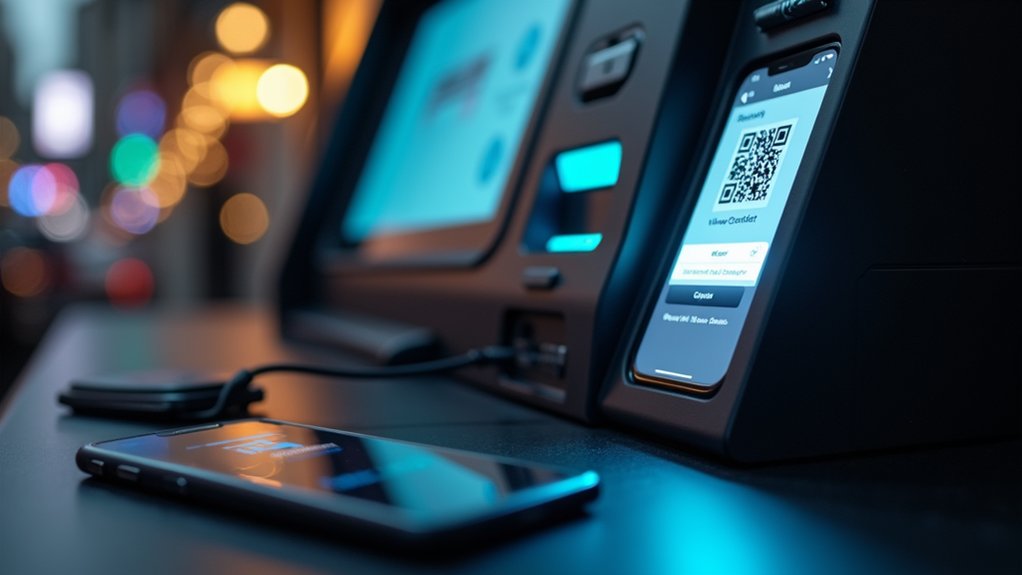
Cryptocurrency automated teller machines (ATMs) have emerged like increasingly accessible gateways for individuals seeking to enter the digital asset marketplace without steering through traditional exchanges, with over 30,000 of these machines now installed globally.
The utilization of these devices requires preliminary preparation, namely the establishment of a compatible cryptocurrency wallet, which may exist in either software or hardware form, capable of supporting the intended transaction currencies. Users should locate suitable machines via specialized tools like Coin ATM Radar, which provides filtration options based on proximity, fee structures, operational status, and supported cryptocurrencies.
Effective crypto ATM usage demands wallet preparation and strategic machine selection through platforms offering comprehensive filtration capabilities.
Prior to initiating a transaction, users must generate a QR code representation of their wallet address, though manual input remains an alternative option at most terminals. Fee consideration remains paramount, as crypto ATMs typically impose substantial charges ranging from 10-23%, markedly exceeding costs associated with conventional exchange platforms.
These fee structures commonly incorporate both fixed components and variable percentages dependent upon transaction magnitude, with geographic location further influencing price variations. These machines operate independent of banks, communicating directly with the blockchain to process transactions. Many ATMs support popular currencies like Bitcoin, Ethereum, and Litecoin, though availability varies by location and operator.
The fundamental transaction process commences with the selection of operation type—purchasing, selling, or transferring cryptocurrency—followed by identity verification procedures, which vary in stringency according to transaction size and regulatory requirements.
When purchasing cryptocurrency, users deposit cash into the machine and receive digital assets in their designated wallet within approximately 10-15 minutes, whereas selling cryptocurrency involves scanning an ATM-generated QR code and receiving physical currency upon confirmation.
Compliance with anti-money laundering regulations necessitates identity verification steps for most transactions, with requirements escalating proportionally to transaction size. Users must remain vigilant regarding security practices, employing reputable wallets and preserving transaction receipts for potential dispute resolution.
Despite relatively high fees, crypto ATMs provide value through accessibility, rapid processing, and minimal technical barriers, making them particularly advantageous for cryptocurrency newcomers, underbanked populations, or those requiring immediate digital asset access without traversing complex exchange registration procedures.
Frequently Asked Questions
Are There Daily Limits for Transactions at Crypto ATMS?
Crypto ATMs implement daily transaction limits that vary greatly between operators, with thresholds ranging from $10,000 to $50,000 depending on the provider.
These restrictions are influenced by multiple factors, including operator policies, machine specifications, regulatory requirements, and geographical location.
Many providers utilize tiered verification systems, whereby customers can access higher transaction limits upon completing additional identity verification procedures, while pre-registration often enables users to exceed standard limitations.
Can I Buy Multiple Cryptocurrencies From a Single ATM?
Most cryptocurrency ATMs offer multiple digital assets for purchase through a single terminal, though available options vary by operator and machine model.
Leading providers, like Bitcoin Depot and CoinFlip, typically support mainstream cryptocurrencies including Bitcoin, Ethereum, and Litecoin, with premium machines offering additional altcoins.
Users should verify specific cryptocurrency availability before visiting an ATM, since machine capabilities differ greatly across geographical regions and regulatory environments.
Which Verification Documents Are Typically Required at Crypto ATMS?
Verification requirements at crypto ATMs typically follow a tiered structure based on transaction amounts.
For purchases under $500, basic phone verification with SMS codes suffices. Transactions between $500-$2,995 necessitate government-issued photo identification.
While amounts exceeding $2,995 require both government ID and Social Security Number.
Daily transaction limits, which may reach $19,000, correspond directly to verification levels, with pre-registration via mobile applications potentially streamlining the verification process considerably.
Do Crypto ATMS Charge Higher Fees Than Online Exchanges?
Crypto ATMs typically charge considerably higher fees than online exchanges, with transaction costs ranging from 5% to 25% plus $1-$3 network fees, compared to online exchanges' typical 0.1%-1.5% fee structure.
This substantial premium reflects the costs of physical infrastructure, cash handling, immediate liquidity provision, enhanced security measures, and stringent regulatory compliance requirements that operators must maintain across diverse jurisdictions.
Ultimately, this creates a convenience-cost tradeoff for users seeking immediate cryptocurrency access.
Can I Sell Cryptocurrency at All Crypto ATMS?
Not all cryptocurrency ATMs support selling functionality, since the service depends on several factors, including the machine's manufacturer design, operator configurations, and regulatory requirements.
While bidirectional ATMs from providers like Genesis Coin, BitAccess, and General Bytes can facilitate sales, many machines are unidirectional (buy-only).
Additionally, selling typically requires more stringent KYC/AML compliance measures than purchasing, with verification steps that may include ID scans, fingerprint checks, or SMS verification.
